#Canadian National War Memorial
Explore tagged Tumblr posts
Text









The Second Boer War erupted in South Africa between the British-ruled Cape Colony, and the Boer-ruled Transvaal and Orange Free State on October 11, 1899.
#travel#original photography#South African (Boer War) Memorial by Walter Allwards#Second Boer War#11 October 1899#125th anniversary#Canadian history#Toronto#Ontario#Ottawa#Canada#summer 2018#cityscape#architecture#fountain#public art#sculpture#2015#The Response#Canadian National War Memorial#National War Memorial by Vernon March#vacation#tourist attraction#landmark
2 notes
·
View notes
Text

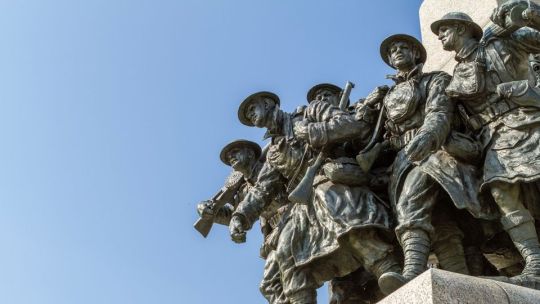
Built to honour the fallen of The Great War, Canada's War Memorial was unveiled by King George VI & Queen Elizabeth in Ottawa during the Royal Tour of 1939.. three months before the outbreak of WWII.
#National War Memorial#Ottawa#Remembrance Day#WWI#WWII#Korean War#RCAF#Royal Canadian Navy#The Fallen#British Empire#King George VI#Queen Elizabeth#May 1939
104 notes
·
View notes
Text
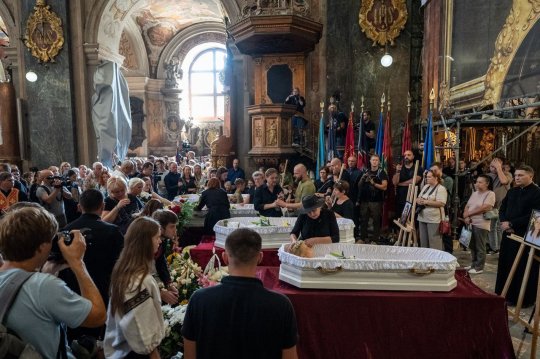
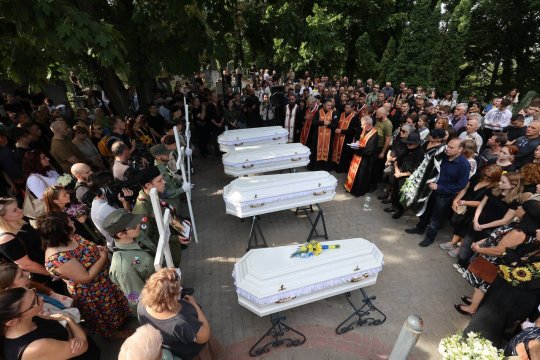
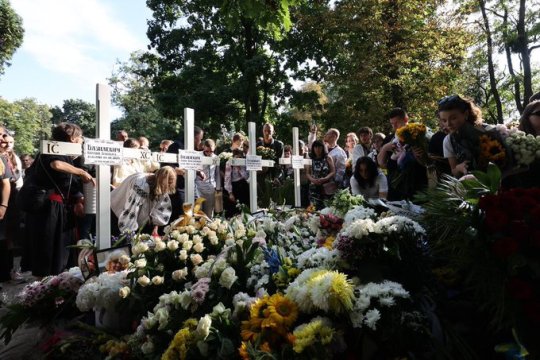
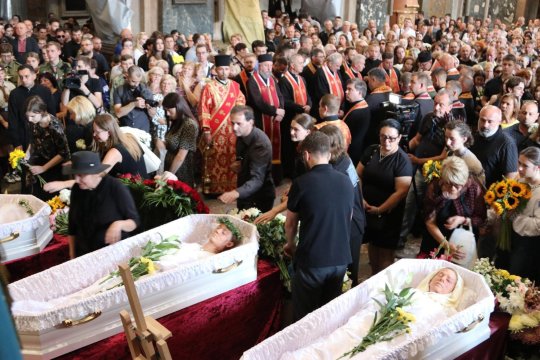
A memorial service was held in Lviv for 7-year-old Emilia, 18-year-old Daria, 21-year-old Yaryna, and their mother Yevhenia, all killed in the Russian strike on September 4.

Meanwhile, Russian propaganda was at a film festival in Venice. The film "Russians at War" had funding from Canadian tax dollars. Unless something changes, it will also be shown at a film festival in Toronto on September 10th. It received $340,000 from the Canada Media Fund, which receives funding from the Government of Canada (Source). It also had support from France’s Centre National de Cinéma.


This is some of what the Ukrainian Canadian Congress had to say about it. You can find more of their statements on their website. They encourage everyone to contact the Canada Media Fund to share views on the funding and that the screening of the film should be cancelled. Contact information is in the link.
The Canadian Government says it is very concerned about the influence of Russian propaganda. Then why is the Canada Media Fund using taxpayer money to fund: —A movie – Russians at War – made by a filmmaker whose previous movies used to be broadcast by Russia Today, a Russian propaganda outlet sanctioned by the Government of Canada? —A filmmaker who entered sovereign Ukrainian territory together with invading Russian armies, thus violating Ukrainian law, Ukrainian sovereignty and possibly breaching Canadian sanctions? —Why did this film receive $340,000 from the Canada Media Fund, which is funded by the Government of Canada? —Why is the Toronto International Film Festival (TIFF) screening a movie that seeks to explain away Russia’s genocidal war of aggression against Ukraine? Why is TIFF showcasing a film which blames “propaganda” or “the fog of war” for the Russian armies who invaded Ukraine and who rape, torture, murder and dehumanize Ukrainians?
The TVO (Ontario's public educational media organization) had this to say on the matter of the film.
Russians at War is at its core an anti-war film. It is unauthorized by Russian officials and was made at great personal risk to the filmmaker, who was under constant threat of arrest and incarceration for trying to tell an unofficial story. This film shows the increasing disillusionment of Russian soldiers as their experience at the front doesn’t jive with the media lies their families are being told at home. The film was produced by an Academy Award nominee with the support of cultural agencies in France and Canada because it is a documentary made in the tradition of independent war correspondence. We encourage people to see the documentary for themselves when it is available. It will be screening at the Toronto International Film Festival next week and will be airing on TVO in the coming months. TVO is an education and public affairs-focused organization. Our priority is to provide our viewers with important stories from across Ontario and around the world. TVO remains firmly committed to delivering high-quality and ethical content. We value transparency and integrity in our work and continue to uphold these principles in all our operations.” – TVO Media Education Group
This is naivety at best. No matter what, it's being complicit to white washing Russian war crimes.
Anastasia Trofimova, the documentary's filmmaker, has at least 11 films funded by RT. And as the DOJ in America has shown us recently, RT has direct ties to the Kremlin. To think she could get access and just film anything without the approval of the FSB is laughable. Nothing happens without their approval, and at the very least it would be a breach of OpSec.
And what she says gets even worse.
Trofimova was asked at the Venice press conference on whether it was “ethical” to humanize Russian soldiers, in light of war crimes committed by Russia’s army during its ongoing invasion of Ukraine. “I find it a little bit of a strange question, if we can humanize or not humanize someone. So, are there lists of people who we can humanize and people who we can’t? Of course, we have to humanize everyone. This is a huge tragedy for our region, first of all, and for the entire world,” replied Trofimova. “If we don’t see each other as people… these black and white stereotypes about each other, this will only make the war continue. This will only make the hatred grow… unfortunately, that’s sort of the route taken by politicians, but I don’t think that this is the route that regular people should take.”
Of course she frames it as a great tragedy for Russia. "Russia is always the victim and should never be held accountable" is the common narrative and attitude. She didn't mention Bucha, or Irpin, or any of the other cities that have been wiped off the map. She doesn't acknowledge the ethnic cleansing being done by her country or why Russians are being regarded as something other than human due to their actions and behavior. She keeps talking about seeing people as people, but doesn't acknowledge the perverse racism and dehumanization her fellow Russians do to Ukrainians and the ethnic minorities within Russia. The soldiers in the Russian army carry this attitude to the battlefield. It's not hard to find this behavior in all the videos on Telegram.
To that point and in answer to a second question by the same journalist on whether she had seen the Ukrainian films in Venice, Trofimova voiced her disquiet at the ending of Olha Zhurba’s documentary Songs of Slow Burning Earth which is also playing Out of Competition. The audiovisual diary captures the impact on Ukrainian people and society in the first two years of the ongoing Russian invasion, which began in February 2022. “I found it to be really good, especially the first 15, 20 minutes… when people just started to find out that the war is beginning… I found it to be really strong,” said Trofimova. “The ending, though, I wasn’t that much of a fan of because it sort of contrasted Ukrainian kids and Russian kids, with Ukrainian kids thinking about what they can do to build a better Ukraine for the future, and Russian kids were just shown as marching and singing war songs. “I found this to be playing into that whole narrative that Russians, by definition, are these aggressive and awful people… you know that it’s in their blood to be to be this way."
Look, if she has a problem with how Russian children are being portrayed in the ending of that other film, then maybe she should look around and wonder why the portrayal is there. Ukrainians aren't the ones filling Russian children's heads with propaganda and revanchism. Your fellow Russians are sending their kids to school with backpacks with the fucking Z on them, or making them wear tank costumes in parades. I've read articles of Russians sending their kids to some form of military camp. It's Russian society that creates and reinforces standards to be awful people, not Ukrainians. Examine your damn society first. Look at the war crimes Russian soldiers willingly commit and record to post on Telegram. Listen to what your fellow Russians say about Ukrainians. It's not hard.
This is all grotesque manipulation and propaganda.
If you want to read this article these excerpts are from, here. I'm so disgusted I'm getting a headache.
#Ukraine#Lviv#toronto#Canada#child death#death#memorial service#funeral#Venice#film festival#Russians at war#thats Canadian dollars btw#long post#screaming into the void#russian propaganda
50 notes
·
View notes
Text






The Canadian Army
Remembrance Day in Canada, observed on November 11, honors the men and women who served in the Canadian Armed Forces, particularly those who sacrificed their lives in war, conflict, and peacekeeping missions. This solemn day marks the armistice that ended World War I on November 11, 1918, and has grown to commemorate veterans of all wars, including World War II, the Korean War, and peacekeeping missions around the world.
At 11:00 a.m., Canadians observe a moment of silence to remember and reflect on the courage and sacrifices of military personnel. In many communities, ceremonies are held at cenotaphs and war memorials, where people lay wreaths and recite the poem "In Flanders Fields" by Lieutenant-Colonel John McCrae, a Canadian soldier and poet. The red poppy, inspired by this poem, is a symbol of remembrance in Canada, worn by many people leading up to November 11.
The Royal Canadian Legion, a national organization of veterans, plays a significant role in organizing Remembrance Day events and the annual poppy campaign, with funds going to support veterans and their families.
#military art#history#military#soldier#cavalry#canadian army#canadian uniform#armistice day#remembrance day#world war 1#world war 2#the great war#canadian history#british history
21 notes
·
View notes
Text
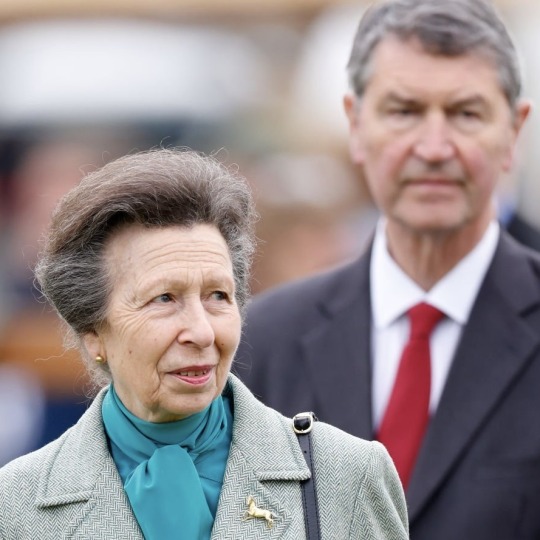

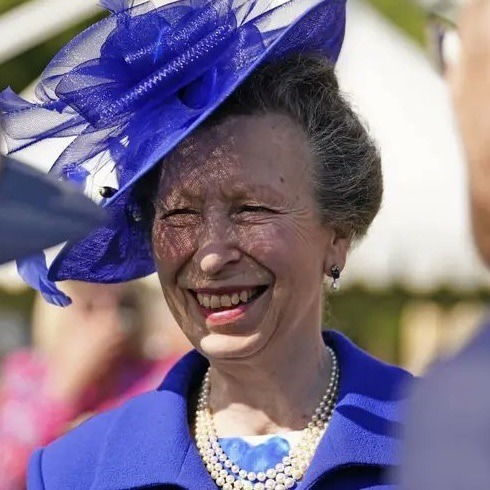
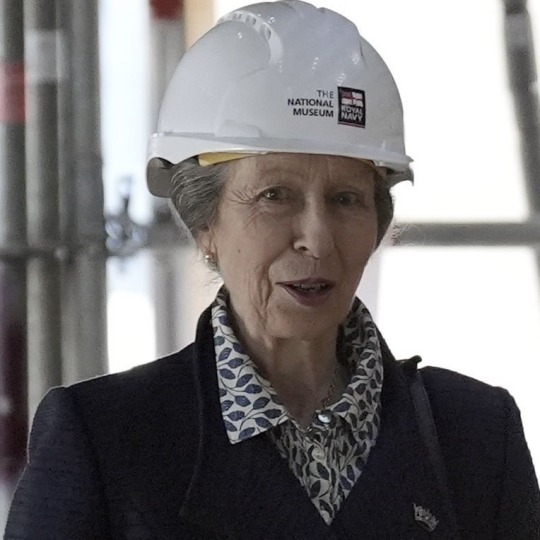


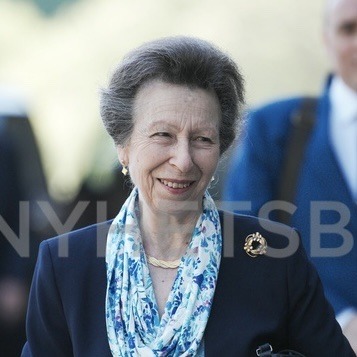
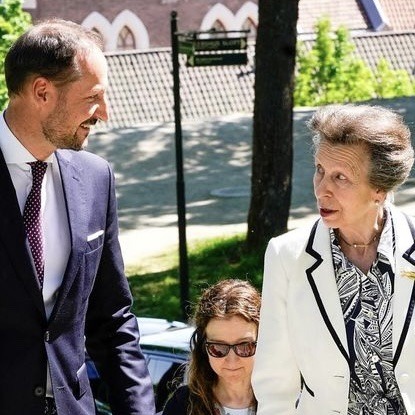
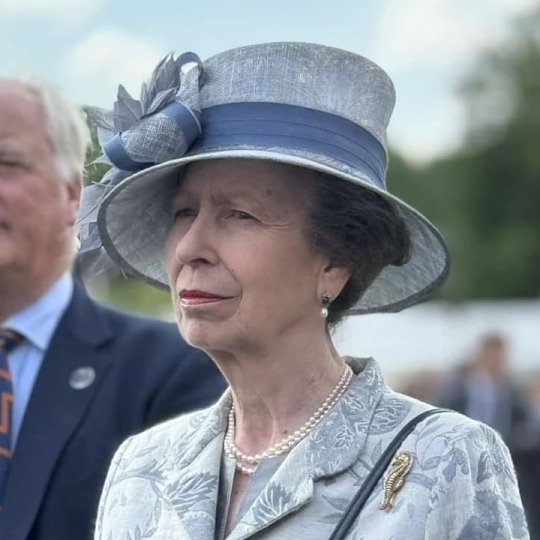
The Princess Royal’s Official Engagements in May 2024
01/05 On behalf of The King, held an Investiture at Buckingham Palace. 🎖️
As President of the City and Guilds of London Institute, attended The Princess Royal Training Awards Alumni Skills Summit at Guildhall. 🏆
With Sir Tim As Patron of the Whitley Fund for Nature, attended the Annual Whitley Awards Ceremony at the Royal Geographical Society. 🦋
02/05 With Sir Tim Named a Great Western Railway Intercity Express Train ‘HRH The Princess Royal’ at Paddington Railway Station. 🚉
Unofficial With Sir Tim Attended day two of the Royal Windsor Horse Show. 🐎
03/05 With Sir Tim Departed the UK from Stansted Airport for Canada and arrived at Vancouver International Airport
HRH, as Commodore-in-Chief of the Royal Canadian Navy (Pacific Fleet), with Sir Tim, carried out engagements in Vancouver;
Attended the Commissioning Ceremony for HMCS MAX BERNAYS at North Vancouver Burrard Drydock, before attending a Reception onboard. ⛴️ 🇨🇦
Attended a Dinner onboard HMCS MAX BERNAYS at sea. 🍽️
04/05 HRH, as Commodore-in-Chief of the Royal Canadian Navy (Pacific Fleet), with Sir Tim, carried out engagements in Victoria;
Toured HMCS Max Bernays at sea. 🌊
Visited Esquimalt Military Family Resource Centre at the Canadian Forces Base Esquimalt. 👪🪖
As President of the Commonwealth War Graves Commission, visited God’s Acre Cemetery and laid a wreath at the Memorial. 🌹
Visited the Maritime Museum of British Columbia Archive. 📜⚓️
Her Royal Highness afterwards visited Fed Urban Agriculture Society Urban Farm, 395 Harbour Road. 🌾
Attended a Reception given by the Lieutenant Governor of British Columbia (the Hon Janet Austin) at Government House. 🥂
Attended a Dinner given by the Lieutenant Governor of British Columbia at Government House. 🍽️
05/05 HRH, as Commodore-in-Chief of the Royal Canadian Navy (Pacific Fleet), with Sir Tim, carried out engagements in Victoria;
Visited Government House Gardens. 🪴⛲️
Attended the Battle of the Atlantic Memorial Parade at the Parliament Building and laid a wreath at the Cenotaph before taking the salute at the march past of Canadian Armed Forces Veterans, Serving Personnel and Cadets. 🫡
Attended a Royal Victoria Yacht Club Youth Dinghy Regatta. 🛥️
As Patron of the Canadian Therapeutic Riding Association, visited Victoria Therapeutic Riding Association. 🐎
Departed Vancouver International Airport for the United Kingdom. 🇨🇦✈️🇬🇧
06/05 Arrived at Heathrow Airport from Canada 🇨🇦✈️🇬🇧
08/05 Hosted a garden party at Buckingham Palace alongside The King and Queen, The Duke and Duchess of Edinburgh and The Duke and Duchess of Gloucester. 🍃☀️🪴
As Patron of the Woolf Institute, attended a Reception, followed by a Dinner, to launch the Randeree End of Life Programme. 🥂🍽️
09/05 As Patron of the Royal Navy and Royal Marines Charity, visited the Headquarters at HMS Excellent in Portsmouth. ⚓️
As Patron of the Women’s Royal Naval Service Benevolent Trust, attended the Annual Presentation and Reception at the National Museum of the Royal Navy. 🏛️
As Patron of the Association of Wrens, opened the new Headquarters Building at Lanyard House, HM Naval Base. 🫡
With Sir Tim As Patron of the National Museum of the Royal Navy, visited the HMS Victory Conservation Project at HM Naval Base ⚓️
With Sir Tim As Patron of the National Museum of the Royal Navy, attended the HMS Victory Conservation Project Dinner onboard HMS Victory at HM Naval Base. ⚓️🍽️
10/05 As Patron of Catch22, visited Greater Manchester Victims’ Services at Greater Manchester Police Headquarters. 👮
Visited the East Manchester Community Boat Project at Portland Basin Museum Marina in Ashton-Under-Lyne to mark its 30th Anniversary. 🛥️🎂
11/05 unofficial With Sir Tim Went to Badminton Horse Trials to cheer on Zara Tindall in her Cross Country stage of the three day event. 🏇🏼
13/05 Visited Stonehaven Open Air Swimming Pool to mark its 90th Anniversary. 🏊♀️🍾🏴
As Admiral of the Sea Cadet Corps and Marine Society and Sea Cadets, opened Stonehaven and District New Headquarters. ⚓️🫡 🏴
14/05 With Sir Tim As Patron of the United Kingdom Sailing Academy held a Founders’ Club Luncheon at St James’s Palace. ⛵️
As Chancellor of the University of London, attended the King’s Centre for Military Health Research Conference. 👩⚕️
With Sir Tim As Patron of the Wellington Trust, attended a Dinner onboard HMS WELLINGTON (mto mark the Ship’s Ninetieth Anniversary. ⚓️��
15/05 As Court Member of the Fishmongers’ Company, visited Glenarm Organic Salmon Fish Farm, off Glenarm Harbour in Ballymena. 🍣🚤
As Court Member of the Fishmongers’ Company, attended a Luncheon at Glenarm Castle. 🐟🍽️🏰
16/05 As Royal Patron of the National Coastwatch Institution, visited Bembridge Station, followed by a Reception at Brading Haven Yacht Club in Ryde, Isle of Wight. 🔍🌊
As President, Royal Yachting Association, opened the Sea View Yacht Club's Training Centre in Seaview, Isle of Wight. 🛥️
17/05 With Sir Tim Hosted the annual Not Forgotten Association garden party at Buckingham Palace. 🫖🍰☀️
20/05 unofficial Departed from RAF Brize Norton for Norway and landed at Oslo Gardermoen Airport. 🇬🇧✈️🇳🇴
21/05 As Patron of the Anglo-Norwegian Resistance Commemoration Project, visited the Norwegian Industrial Workers Museum in Vemork, Norway. 🔨⚙️🇳🇴
As Patron of the Anglo-Norwegian Resistance Commemoration Project, received a briefing on the sinking of DF Hydro at Mael Station in Telemark, Norway. 🏭🇳🇴
Attended a Reception given by His Majesty’s Ambassador to the Kingdom of Norway at the Residence in Oslo. 🥂🇳🇴🇬🇧
22/05 As President of the Commonwealth War Graves Commission, visited Vestre Gravlund Cemetery and laid a wreath on the memorial. 🪦
As Patron of the Anglo-Norwegian Resistance Commemoration Project, visited the Linge Club and attended a Reception at Akershus Fortress, Oslo. 🇳🇴🇬🇧
As Patron of the Anglo-Norwegian Resistance Commemoration Project, visited the Norwegian Shipowners’ Mutual War Risks Insurance Association. 🪖🇳🇴
As Patron of the Anglo-Norwegian Resistance Commemoration Project, with The Crown Prince of Norway, visited the Norwegian Resistance Museum, Akershus Fortress. 🏰 🇳🇴
unofficial Departed from Oslo Gardermoen Airport and landed at RAF Brize Norton . 🇬🇧✈️🇳🇴
23/05 As Patron of the Hornet Services Sailing Club, visited the club for their 60th anniversary. ⛵️🎂
Opened the Army Sailing Association Offshore Centre in Gosport. ⛵️
With Sir Tim & Duke of Kent Held a Garden Party at Buckingham Palace to celebrate the Royal National Lifeboat Institution's 200th anniversary. 🛟☕️
With Sir Tim Visited the Royal Horticultural Society Chelsea Flower Show at the Royal Hospital Chelsea. 🌸🌺🌼💐
24/05 Opened the Admiral Lord Cochrane Room at the Royal United Services Institute in Whitehall, London. 🔐
Sometime in May unofficial Sir Tim, as Chair of Trustees, attended the Science Museum Groups annual dinner
Total official engagements for Anne in May: 53
2024 total so far: 224
Total official engagements accompanied by Tim in May: 23
2024 total so far: 55
FYI - due to certain royal family members being off ill/in recovery I won't be posting everyone's engagement counts out of respect, I am continuing to count them and release the totals at the end of the year.
#a very busy month!!!#i loved her visits to canada and norway!!!#very excited for june!#aimees unofficial engagement count 2024#may 2024#princess anne#princess royal#tim laurence#timothy laurence
41 notes
·
View notes
Text
Denazification, truth and reconciliation, and the story of Germany's story
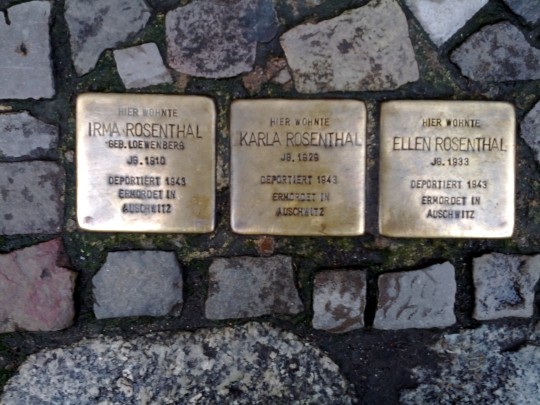
Germany is the “world champion in remembrance,” celebrated for its post-Holocaust policies of ensuring that every German never forgot what had been done in their names, and in holding themselves and future generations accountable for the Nazis’ crimes.
All my life, the Germans have been a counterexample to other nations, where the order of the day was to officially forget the sins that stained the land. “Least said, soonest mended,” was the Canadian and American approach to the genocide of First Nations people and the theft of their land. It was, famously, how America, especially the American south, dealt with the legacy of slavery and Jim Crow.
Silence begets forgetting, which begets revisionism. The founding crimes of our nations receded into the mists of time and acquired a gauzy, romantic veneer. Plantations — slave labor camps where work was obtained through torture, maiming and murder — were recast as the tragiromantic settings of Gone With the Wind. The deliberate extinction of indigenous peoples was revised as the “taming of the New World.” The American Civil War was retold as “The Lost Cause,” fought over states’ rights, not over the right of the ultra-wealthy to terrorize kidnapped Africans and their descendants into working to death.
This wasn’t how they did it in Germany. Nazi symbols and historical revisionism were banned (even the Berlin production of “The Producers” had to be performed without swastikas). The criminals were tried and executed. Every student learned what had been done. Cash reparations were paid — to Jews, and to the people whom the Nazis had conquered and brutalized. Having given in to ghastly barbarism on an terrifyingly industrial scale, the Germans had remade themselves with characteristic efficiency, rooting out the fascist rot and ensuring that it never took hold again.
But Germany’s storied reformation was always oversold. As neo-Nazi movements sprang up and organized political parties — like the far-right Alternative für Deutschland — fielded fascist candidates, they also took to the streets in violent mobs. Worse, top German security officials turned out to be allied with AfD:
https://www.wsws.org/en/articles/2018/08/04/germ-a04.html
Neofascists in Germany had fat bankrolls, thanks to generous, secret donations from some of the country’s wealthiest billionaires:
https://www.spiegel.de/international/germany/billionaire-backing-may-have-helped-launch-afd-a-1241029.html
And they broadened their reach by marrying their existing conspiratorial beliefs with Qanon, which made their numbers surge:
https://www.thedailybeast.com/how-fringe-groups-are-using-qanon-to-amplify-their-wild-messages
Today, the far right is surging around Europe, with the rot spreading from Hungary and Poland to Italy and France. In an interview with Jacobin’s David Broder, Tommaso Speccher a researcher based in Berlin, explores the failure of Germany’s storied memory:
https://jacobin.com/2023/07/germany-nazism-holocaust-federal-republic-memory-culture/
Speccher is at pains to remind us that Germany’s truth and reconciliation proceeded in fits and starts, and involved compromises that were seldom discussed, even though they left some of the Reich’s most vicious criminals untouched by any accountability for their crimes, and denied some victims any justice — or even an apology.
You may know that many queer people who were sent to Nazi concentration camps were immediately re-imprisoned after the camps were liberated. Both Nazi Germany and post-Nazi Germany made homosexuality a crime:
https://time.com/5953047/lgbtq-holocaust-stories/
But while there’s been some recent historical grappling with this jaw-dropping injustice, there’s been far less attention given to the plight of the communists, labor organizers, social democrats and other leftists whom the Nazis imprisoned and murdered. These political prisoners (and their survivors) struggled mightily to get the reparations they were due.
Not only was the process punitively complex, but it was administered by bureaucrats who had served in the Reich — the people who had sent them to the camps were in charge of deciding whether they were due compensation.
This is part of a wider pattern. The business-leaders who abetted the Reich through their firms — Siemens, BMW, Hugo Boss, IG Farben, Volkswagon — were largely spared any punishment for their role in the the Holocaust. Many got to keep the riches they acquired through their part on an act of genocide.
Meanwhile, historians grappling with the war through the “Historikerstreit” drew invidious comparisons between communism and fascism, equating the two ideologies and tacitly excusing the torture and killing of political prisoners (this tale is still told today — in America! My kid’s AP history course made this exact point last year).
The refusal to consider that extreme wealth, inequality, and the lust for profits — not blood — provided the Nazis with the budget, materiel and backing they needed to seize control in Germany is of a piece with the decision not to hold Germany’s Nazi-enabling plutocrats to account.
The impunity for business leaders who collaborated with the Nazis on exploiting slave labor is hard to believe. Take IG Farben, a company still doing a merry business today. Farben ran a rubber factory on Auschwitz slave labor, but its executives were frustrated by the delays occasioned by the daily 4.5m forced march from the death-camp to its factory:
https://pluralistic.net/2023/06/02/plunderers/#farben
So Farben built Monowitz, its own, private-sector concentration camp. IG Farben purchased 25,000 slaves from the Reich, among them as many children as possible (the Reich charged less for child slaves).
Even by the standards of Nazi death camps, Monowitz was a charnel house. Monowitz’s inmates were worked to death in just three months. The conditions were so brutal that the SS guards sent official complaints to Berlin. Among their complaints: Farben refused to fund extra hospital beds for the slaves who were beaten so badly they required immediate medical attention.
Farben broke the historical orthodoxy about slavery: until Monowitz, historians widely believed that enslavers would — at the very least — seek to maintain the health of their slaves, simply as a matter of economic efficiency. But the Reich’s rock-bottom rates for fresh slaves liberated Farben from the need to preserve their slaves’ ability to work. Instead, the slaves of Monowitz became disposable, and the bloodless logic of profit maximization dictated that more work could be attained at lower prices by working them to death over twelve short weeks.
Few of us know about Monowitz today, but in the last years of the war, it shocked the world. Joseph Borkin — a US antitrust lawyer who was sent to Germany after the war as part of the legal team overseeing the denazification program — wrote a seminal history of IG Farben, “The Crime and Punishment of I.G. Farben”:
https://www.scribd.com/document/517797736/The-Crime-and-Punishment-of-I-G-Farben
Borkin’s book was a bestseller, which enraged America’s business lobby. The book made the connection between Farben’s commercial strategies and the rise of the Reich (Farben helped manipulate global commodity prices in the runup to the war, which let the Reich fund its war preparations). He argued that big business constituted a danger to democracy and human rights, because its leaders would always sideline both in service to profits.
US companies like Standard Oil and Dow Chemicals poured resources into discrediting the book and smearing Borkin, forcing him into retirement and obscurity in 1945, the same year his publisher withdrew his book from stores.
When we speak of Germany’s denazification effort, it’s as a German program, but of course that’s not right. Denazification was initiated, designed and overseen by the war’s winners — in West Germany, that was the USA.
Those US prosecutors and bureaucrats wanted justice, but not too much of it. For them, denazification had to be balanced against anticommunism, and the imperatives of American business. Nazi war criminals must go on trial — but not if they were rocket scientists, especially not if the USSR might make use of them:
https://en.wikipedia.org/wiki/Wernher_von_Braun
Recall that in the USA, the bizarre epithet “premature antifascist” was used to condemn Americans who opposed Nazism (and fascism elsewhere in Europe) too soon, because these antifascists opposed the authoritarian politics of big business in America, too:
https://www.thenation.com/article/archive/premature-antifascist-and-proudly-so/
When 24 Farben executives were tried at Nuremberg for the slaughter at Monowitz, then argued that they had no choice but to pursue slave labor — it was their duty to their shareholders. The judges agreed: 19 of those executives walked.
Anticommunism hamstrung denazification. There was no question that German elites and its largest businesses were complicit in Nazi crimes — not mere suppliers, but active collaborators. Antifacism wasn’t formally integrated into the denazification framework until the 1980s with “constitutional patriotism,” which took until the 1990s to take firm root.
The requirement for a denazification program that didn’t condemn capitalism meant that there would always be holes in Germany’s truth and reconciliation process. The newly formed Federal Republic set aside Article 10 of the Nuremberg Charter, which would hold all members of the Nazi Party and SS responsible for their crimes. But Article 10 didn’t survive contact with the Federal Republic: immediately upon taking office, Konrad Adenauer suspended Article 10, sparing 10 million war criminals.
While those spared included many rank-and-file order-followers, it also included many of the Reich’s most notorious criminals. The Nazi judge who sent Erika von Brockdorff to her death for her leftist politics was given a judge’s pension after the war, and lived out his days in a luxurious mansion.
Not every Nazi was pensioned off — many continued to serve in the post-war West German government. Even as Willy Brandt was demonstrating historic remorse for Germany’s crimes, his foreign ministry was riddled with ex-Nazi bureaucrats who’d served in Hitler’s foreign ministry. We still remember Brandt’s brilliant 1973 UN speech on the Holocaust:
https://www.willy-brandt-biography.com/historical-sources/videos/speech-uno-new-york-1973/
But recollections of Brandt’s speech are seldom accompanied by historian Götz Aly’s observation that Brandt couldn’t have given that speech in Germany without serious blowback from the country’s still numerous and emboldened antisemites (Brandt donated his Nobel prize money to restore Venice’s Scuola Grande Tedesca synagogue, but ensured that this was kept secret until after his death).
All this to say that Germany’s reputation as “world champions of memory” is based on acts undertaken decades after the war. Some of Germany’s best-known Holocaust memorials are very recent, like the Wannsee Conference House (1992), the Memorial to the Murdered Jews of Europe (2005), and the Topography of Terror Museum in (2010).
Germany’s remembering includes an explicit act of forgetting — forgetting the role Germany’s business leaders and elites played in Hitler’s rise to power and the Nazi crimes that followed. For Speccher, the rise of neofacist movements in Germany can’t be separated from this selective memory, weighed down by anticommunist fervor.
And in East Germany, there was a different kind of incomplete rememberance. While the DDR’s historians and teachings emphasized the role of business in the rise of fascism, they excluded all the elements of Nazism rooted in bigotry: antisemitism, homophobia, sectarianism, and racism. For East German historians, Nazism wasn’t about these, it was solely “the ultimate end point of the history of capitalism.”
Neither is sufficient to prevent authoritarianism and repression, obviously. But the DDR is dust, and the anticommunism-tainted version of denazification is triumphant. Today, Europe’s wealthiest families and largest businesses are funneling vast sums into far-right “populist” parties that trade in antisemitic “Great Replacement” tropes and Holocaust denial:
https://corporateeurope.org/sites/default/files/2019-05/Europe%E2%80%99s%20two-faced%20authoritarian%20right%20FINAL_1.pdf
And Germany’s coddled aristocratic families and their wealthy benefactors — whose Nazi ties were quietly forgiven after the war — conspire to overthrow the government and install a far-right autocracy:
https://www.reuters.com/world/europe/25-suspected-members-german-far-right-group-arrested-raids-prosecutors-office-2022-12-07/
In recent years, I’ve spent a lot of time thinking about denazification. For all the flaws in Germany’s remembrance, it stands apart as one of the brightest lights in national reckonings with unforgivable crimes. Compare this with, say, Spain, where the remains of fascist dictator Francisco Franco were housed in a hero’s monument, amidst his victims’ bones, until 2019:
https://en.wikipedia.org/wiki/Pedro_S%C3%A1nchez#Domestic_policy
What do you do with the losers of a just war? “Least said soonest mended” was never a plausible answer, and has been a historical failure — as the fields of fluttering Confederate flags across the American south can attest (to say nothing of the failure of American de-ba’athification in Iraq):
https://en.wikipedia.org/wiki/De-Ba%27athification
But on the other hand, people who lose the war aren’t going to dig a hole, climb in and pull the dirt down on top of themselves. Just because I think Germany’s denazification was hobbled by the decision to lets its architects and perpetrators walk free, I don’t know that I would have supported prison for all ten million people captured by Article 10.
And it’s not clear that an explicit antifascism from the start would have patched the holes in German denazification. As Speccher points out, Italy’s postwar constitution was explicitly antifascist, the nation “steeped in institutional anti-fascism.” Postwar Italian governments included prominent resistance fighters who’d fought Mussolini and his brownshirts.
But in the 1990s, “the end of the First Republic” saw constitutional reforms that removed antifascism — reforms that preceded the rise of the corrupt authoritarian Silvio Berlusconi — and there’s a line from him to the neofascists in today’s ruling Italian coalition.
Is there any hope for creating a durable, democratic, anti-authoritarian state out of a world run by the descendants of plunderers and killers? Can any revolution — political, military or technological — hope to reckon with (let alone make peace with!) the people who have brought us to this terrifying juncture?
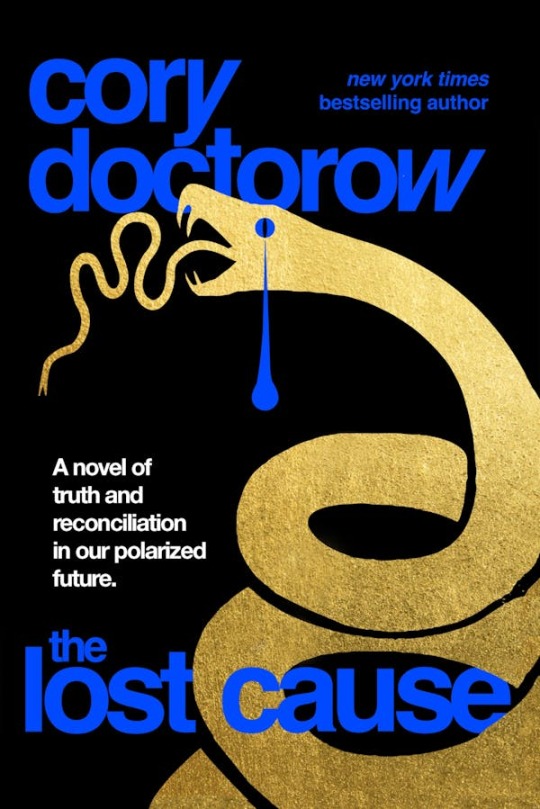
[Image ID: The Tor Books cover for ‘The Lost Cause,’ designed by Will Staehle, featuring the head of the snake on the Gadsen ‘Don’t Tread on Me’ flag, shedding a tear.]
Like I say, this is something I’ve spent a lot of time thinking about — not just how we might get out of this current mess, but how we’ll stay out of it. As is my wont, I’ve worked out my anxieties on the page. My next novel, The Lost Cause, comes out from Tor Books and Head of Zeus in November:
https://us.macmillan.com/books/9781250865939/the-lost-cause
Lost Cause is a post-GND utopian novel about a near-future world where the climate emergency is finally being treated with the seriousness and urgency it warrants. It’s a world wracked by fire, flood, scorching heat, mass extinctions and rolling refugee crises — but it’s also a world where we’re doing something about all this. It’s not an optimistic book, but it is a hopeful one. As Kim Stanley Robison says:
This book looks like our future and feels like our present — it’s an unforgettable vision of what could be. Even a partly good future will require wicked political battles and steadfast solidarity among those fighting for a better world, and here I lived it along with Brooks, Ana Lucía, Phuong, and their comrades in the struggle. Along with the rush of adrenaline I felt a solid surge of hope. May it go like this.
The Lost Cause is a hopeful book, but it’s also a worried one. The book is set during a counter-reformation, where an unholy alliance of seagoing anarcho-capitalist wreckers and white nationalist militias are trying to seize power, snatching defeat from the jaws of the fragile climate victory. It’s a book about the need for truth and reconciliation — and its limits.
As Bill McKibben says:
The first great YIMBY novel, this chronicle of mutual aid is politically perceptive, scientifically sound, and extraordinarily hopeful even amidst the smoke. Forget the Silicon Valley bros — these are the California techsters we need rebuilding our world, one solar panel and prefab insulated wall at a time.
We’re currently in the midst of a decidedly unjust war — the war to continue roasting the planet, a war waged in the name of continuing enrichment of the world’s already-obscenely-rich oligarchs. That war requires increasingly authoritarian measures, increasing violence and repression.
I believe we can win this war and secure a habitable planet for all of us — hell, I believe we can build a world of comfort and abundance out of its ashes, far better than this one:
https://tinyletter.com/metafoundry/letters/metafoundry-75-resilience-abundance-decentralization
But even if that world comes to being, there will be millions of people who hate it, a counter-revolution in waiting. These are our friends, our relatives, our neighbors. Figuring out how to make peace with them — and how to hold their most culpable, most powerful leaders to account — is a project that’s as important, and gigantic, and uncertain, as a just transition is.

Next weekend, I’ll be at San Diego Comic-Con:
Thu, Jul 20 16h: Signing, Tor Books booth #2802 (free advance copies of The Lost Cause— Nov 2023 — to the first 50 people!)
Fri, Jul 21 1030h: Wish They All Could be CA MCs, room 24ABC (panel)
Fri, Jul 21 12h: Signing, AA09
Sat, Jul 22 15h: The Worlds We Return To, room 23ABC (panel)

If you'd like an essay-formatted version of this thread to read or share, here's a link to it on pluralistic.net, my surveillance-free, ad-free, tracker-free blog:
https://pluralistic.net/2023/07/19/stolpersteine/#truth-and-reconciliation

[Image ID: Three 'stumbling stones' ('stolpersteine') set into the sidewalk in the Mitte, in Berlin; they memorialize Jews who lived nearby until they were deported to Auschwitz and murdered.]
#pluralistic#stolpersteine#historians' dispute#Historikerstreit#nazis#godwin's law#mussolini#berlusconi#italy#antifa#fascism#history#truth and reconciliation#the lost cause#denazification
247 notes
·
View notes
Text
by Elchanan Poupko
For centuries, rabbis around the world get up on Shabbat Zachor and speak about memory, never about violence. Not once in the past 2000 years of Jewish history – and that is a vast record to draw on – was the Biblical account of Amalek used to evoke revenge. It was always used to evoke memory. The imperative to remember the unprovoked atrocities committed against our own innocent communities.
The name of Amalek was invoked to remind us of the ubiquitous nature of antisemitism, the only hate in the world directed against people who are unknown to those seething with hate for us. People like the Houthis in Yemen who never saw a Jew in their life, yet are determined to destroy the Jewish state; Nazis in Germany who traveled hundreds of miles away from home to kill Jews in Belarus, Lithuania, Hungary, and Morocco even though they had never seen or known much about those Jews, that is the kind of evil we speak about when invoking the memory of Amalek.
In our generation, when speaking about that kind of senseless hate, we speak about the Hamas terrorists who woke up on the morning of October 7th and were willing to gable away their lives and futures to murder and burn alive people like Canadian peace activist Vivian Silver, someone who spent her life driving Palestinians from Gaza to medical appointments in Israel’s best hospitals. We invoke the memory of Amalek when we encounter something so evil it defies any logical explanation.
It is appalling to see how many people rushed to the Bible to judge Israel’s use of the memory of Amalek before looking at its use for the past 2000 years, most notably during the Holocaust.
While Germany starved to death and killed hundreds of thousands of Jews in the Warsaw Ghetto, Jews secretly published a newsletter called Kol Hamidbar in which the emaciated Jews wrote: “Many nations waged war against the Jews and did bad unto them, but Amalek, that is something absolutely different. Amalek put the destruction of Jews as a goal, a program, a method; premeditated, in cold blood, sadistically, according to a plan, organized, and with laws… Amalek and their grandson Haman are not satisfied with the killing of individual Jews…they would like to destroy the entire nation and eliminate Judaism.”
These words ring powerfully to any Jew who has seen what Hamas terrorists did on October 7th. The senseless hate that defies any logic or pattern of human conflict is simply unexplainable. The kidnapping of grandmothers from their homes and burning of babies and little girls alive with no reason whatsoever has no other language.
Jews invoke this language of Amalek when we encounter the world’s oldest hate, acted on with cruelty no human can explain. Jews have done so countless times while remembering the Holocaust and also did so while seeing the evils of Hamas on October 7th.
Like Jews after the Holocaust, the memory of Amalek’s unforgivable horrors reminds us of the need to take action. How does that action look? Years ago, speaking to congregants in synagogue, here is what I said as I spoke of the story of Amalek, and I was not the only one:
“The greatest heed to the call ‘Yidden, Nekama – Jews, Revenge’ inscribed in blood in Slabodka, Lithuania, is not going back to that town and place or to those perpetrators; it is that there are today thousands of students in Israel learning in Yeshivas named Slabodka. It is that we are undeterred in leading proud Jewish lives, laser-focused on the future while refusing to forget the past.”
Jewish revenge never looks like the acts of our enemies. We never follow in the inhumane footsteps of those who committed the unthinkable against us. This is true also concerning the horrors of October 7th.
57 notes
·
View notes
Text
British Michigan Oneshot
Letters to a Dead Man (Wattpad | Ao3)
The Upper Peninsula is a state called Sylvania in this AU
August 12, 1868
Dear Michigan,
I must confess I don’t know precisely why I am writing this letter. I suppose I am just curious about my Canadian neighbors, and I want to be on good terms with you. While I know that we are on good terms politically, I am curious about the men behind the governments. I am sending a similar letter to Ontario, asking if either of you is interested in meeting in person and fostering an era of peace in our region now that tensions between our borders seem to be dying down.
Sincerely,
The Superior State of Sylvania
✎﹏﹏﹏﹏﹏﹏﹏﹏﹏﹏﹏﹏﹏﹏
September 7, 1868
Sylvania,
While I am intrigued by your offer, I will admit I am not willing to visit your land with my newborn brother due to our nation's history. While I do not want to slight you by implying your offer is deceitful, but I have little reason to trust an American state. Vermont insists you are being truthful, so I am willing to extend an offer for you to come to my capital city of Detroit and meet my younger brother and I.
I cannot say that it will start a friendship, but perhaps it can satisfy your curiosity and put suspicion to rest. If you are willing to accept those terms, then I will prepare accommodations for you and arrange the date.
Sincerely,
Michigan
✎﹏﹏﹏﹏﹏﹏﹏﹏﹏﹏﹏﹏﹏﹏
September 28, 1868
Michigan,
I heard that you responded to Sylvania’s letter and spent days agonizing over whether or not I should reach out to you. While you talked to Vermont and have responded, she has kept the details of your correspondence a secret, so I am unsure whether my letter will be appreciated. But I have much to say, and I am no longer willing to hold my tongue, not now, in the aftermath of our great Civil War.
Sometimes, I wonder if you remember any of our childhood, of the jokes, the joy, and the laughter. Some nights, I am haunted by those happy memories and the thoughts of what you are going through. Vermont says you are happy, and I try to believe that, but there is little it can do to soothe the unhappy thoughts that haunt my sleep.
I am so very sorry I wasn’t there for you. I was the closest member of our family at the time, and I often regret not traveling to Detroit to protect your land, as you were not able to. I regret not being there to convince Hull not to surrender. If I had only been less foolish, I could have saved you from your fate.
I will never forgive myself for that. I hope you forgive me.
It is hard to put into words the many, many things I have to say to you. I want to know you are safe, that you are okay.
I miss you so much, little brother.
I hope that this letter is not an intrusion and that it doesn’t get you in trouble with Britain. I know you and the Canadians are supposed to be somewhat independent now, but knowing Britain, I wonder how much control that really leaves you with.
If you are willing and able, I would like to meet you in person, to talk to you again. It has been many years. I miss you so.
Your faithful older brother,
Ohio
✎﹏﹏﹏﹏﹏﹏﹏﹏﹏﹏﹏﹏﹏﹏
October 3, 1868
Michigan,
I couldn’t believe it when I heard from Ohio that you were starting to talk to others in our family aside from Vermont. I was so happy that I nearly cried with joy. I have missed you so, so much, and I can’t wait to start talking to you again.
It was terrifying losing you. I thought at first that you were just quieter than usual or that you had gone to sleep for a long time like Newport, Portsmouth, and Warwick sometimes do. Getting that letter and realizing that you were gone, that you had been taken by the man who had hurt our father so much, that hurt our family, I was so scared.
Learning that you weren’t ever going to come home was scarier. I was so scared for you. You were my big brother, and you always seemed so strong, like nothing could hurt you.
And then Britain took you. And he hurt you. (I presume. Every British colony I have met has stories of how he hurt them, and considering how much he hates our father, I can’t imagine he was willing to be nice to you.)
I didn’t want to believe that you were going to be gone forever. I was convinced it was a trick, a lie, anything but the truth.
But he stole you.
Mitchigan, I miss you so much. I have never been closer to a brother than you, and every day, the ache from your being gone, being trapped, beats in my chest like another heartbeat. It is a gaping wound in my soul, one that has never healed. Sometimes, I will sit on the shores of the lake that shares your name and stare out across the water.
I cannot see your land, but I pretend I can. It helps.
I have bought your birthday gifts every year you and I have been apart. Since I got my body, that is. I sometimes wonder why. I have never gotten the chance to give them to you, and you and I have not spoken since we were both young and innocent.
I want to see you again if you are willing. I have a lot of gifts for you.
With all the love I have in my heart, your little brother,
Illinois
✎﹏﹏﹏﹏﹏﹏﹏﹏﹏﹏﹏﹏﹏﹏
November 1, 1868
Sylvania,
Please tell your siblings to quit sending me letters. Vermont is my brother, and you are my neighbor, but I refuse to engage with any of the states involved in America’s delusion that I was once American and am, therefore, his child. I won’t have my family be dishonored by this.
I don’t care who they think I am, but I will not be manipulated into thinking I am related to them. I will not give up my family to feed into the delusions of a country that I am not and have never been a part of. I will not betray my father or, my proper siblings, or my grandfather for them.
Please ensure they know that, as I do not want to be hounded by their letters and delusions.
Sincerely,
Michigan
#oneshots by weird#statehumans#british michigan au#statehumans michigan#statehumans ohio#statehumans illinois#statehumans sylvania#countryhumans au#countryhumans oc
7 notes
·
View notes
Text





It's National Indigenous Veterans Day. My grandfather & his brothers served. The pictures are him in uniform in 1945, him during the last year of his life, him receiving his service pin & his order of recognition. He was so proud to be a Veteran & he worked really hard for Indigenous rights the rest of his life. You can find more about him & thier service in the Canadian Encyclopedia's Memory Project linked here:
11.08.23
30 notes
·
View notes
Text





Donald Alexander Smith, 1st Baron Strathcona and Mount Royal, fur trader and railroad financier was born in Forres, August 6th 1820.
Donald Smith was the son of a saddler, a commoner, he was educated at Anderson’s Free School, he left school at 16 and was started his adult life apprenticed to become a lawyer at the town clerks office in Forres, so he was smart and was not going to toil as a crofter like his family had before him. At 18 he chose to leave Forres and follow his Uncle who had been successful in the fledgling Companies in 19th century Canada, so it was he set sail for Montreal to become a junior clerk in the service of the Hudson’s Bay Company, in what was then Lower Canada.
Smith’s achievements are numerous. For a record 75 years he worked for the Hudson’s Bay Company. He became Governor of that company, a substantial investor in the Canadian Pacific Railway, a benefactor of McGill University, where he founded Royal Victoria College for women in 1896, and founder of Victoria Hospital in Montreal, the list goes on and on in industry, politics, and philanthropy.
Lord Strathcona went on to use his incredible wealth and status to help build Canada into a nation, he helped establish the Royal Canadian Mounted Police and Canada’s independent military. He contributed large donations to medical science and women’s education, among many others. His estate was valued at $5.5 million. During his lifetime, (remember this was a self made man),and including the bequests left after his death, he gave away just over $7.5 million plus a further £1 million (not including private gifts and allowances) to a huge variety of charitable causes.
If I was to compare what Smith achieved during his life with anyone else the only person I can think of is Andrew Carnegie. The pics show the man himself, the second posing to hit the ceremonial last spike of the Canadian Pacific Railway, behind him to his left is the subject of a post last month, Sandford Fleming, thegroup pic is a memorial plaque in Forres that states
“Donald Alexander Smith Lord Strathcona and Mount Royal Pioneer, Statesman and Philanthropist in Forres on 6th August 1820 in the family home on a site close to this wall near the banks of the Mosset. He emigrated to Canada in 1838 and eventually became governor of the Hudson Bay Company. Concerned with the development of the dominion he became co-founder of the Canadian Pacific Railway. In 1896 he was appointed to the United Kingdom As a High Commissioner for Canada and received a peerage the following year. He raised and equipped Lord Strathcona’s Horse (Royal Canadians) for service during the South African War. Many local including Leanchoil Hospital and St. Laurence Church benefited greatly through his renowned generosity. Lord Strathcona died in Canada on the 21st January 1914 Erected by the Community Council for The Royal Burgh of Forres 1988”
6 notes
·
View notes
Text












The Canadian National War Memorial was unveiled by King George VI and Queen Elizabeth in Ottawa on May 21, 1939.
#Peace and Liberty#the Response#National War Memorial by Vernon March#Canadian National War Memorial#unveiled#21 May 1939#85th anniversary#tracks#summer 2015#2018#Canadian history#Ottawa#Ontario#travel#original photography#cityscape#sentinel#wreath#tourist attraction#landmark#architecture#vacation
2 notes
·
View notes
Note
Do Canadians have a fireworks holiday? Here in Hawaii New years is the big one and I have fond memories of making sparkler bombs as a child. That being we'd unwrap sparklers to extract the gunpowder placing it in a vessel of tin foil. Then we'd wrap it with an improvised fuse place it in the middle of the street use a sparkler to light the fuse and run like hell away from the large explosion.
Adendum to previous sparkler bomb ask somehow everyone involved has survived to adulthood with all limbs and digits intact
Well I'm glad you clarified that, admittedly when I hear stories from my mom who grew up in rural post-war Japan, you hear some pretty crazy stuff about fireworks! :p
In Canada, we do have fireworks holidays, but pretty much the same as most North American stuff, like New Years and our national day, Canada Day (pretty much same as Independence Day but way less patriotic :p) I grew up right by the border, Niagara River (see war of 1812 if you want to see the landscape and how close we are to America physically), it's a bikeable range to the States if there wasn't a body of water in the way, but often one of the safest and more popular area for fireworks shows. Where I live, we're pretty anal about our fire-related regulations cuz of the forest fires and such, so most of the time, firework stuff is run by somebody official™️ if you're doing anything big and near densely populated areas.
We would get in our families cars packed with snacks, blankets and foldable furniture, park on the grass in the dark with all the other families right by the edge of the border overlooking the river (it's a bit of a sheer drop, but there's fences 👍), and watch fireworks with our American neighbours cheering on the other side of the river where you could hear the booming echoes bounce between the two countries walling in the sound for miles around. Then Independence Day would happen a few days later and we'd get to see another firework show lol ^^
It's funny thinking about it again, how that pivotal location was a strategic point for how our country was shaped today and yet now, we happily share with our neighbours on the otherside, the delight and wonder of both of our countries gaining sovereignty despite the past painting us as enemies. Not to get deep or whatever, it's just a pleasant memory I have of growing up. Anyways, thanks for sharing, I love hearing about stuff like this, makes me feel like we all get to know each other a little better :D
16 notes
·
View notes
Text

Royal Canadian Air Force celebrates its first Centenary
Fernando Valduga By Fernando Valduga 04/01/2024 - 23:07in Military
The Royal Canadian Air Force (RCAF) has reached the 100-year mark today. The beginning of the celebrations of the first centenary was marked with a ceremony in Edmonton.
As the Royal Canadian Air Force celebrates its 100º anniversary, Edmonton became the host of a moving recognition of its unwavering service to Canada. A historic air passage was carried out by the Tactical Helicopter Squadron "Goose" 408, adorning the skies above the legislative grounds of Alberta and marking the beginning of a six-month commemoration period throughout the country.

Helicopter overfly in Edmonton

The squadron's overflight was led by the veteran pilot and current deputy commander, Major Geoff Martin. With more than a decade of experience at RCAF and a personal connection with the service arising from childhood memories of admiring aircraft with his grandfather, Martin embodies the passion and dedication that have been the hallmark of the service in the last century.
The RCAF turns 100 today! ?
Today, we celebrate a century of excellence, courage, and innovation in the RCAF. As we mark this milestone, we extend our heartfelt gratitude to all the incredible individuals past and present who have played a part in shaping #YourAirForce. #RCAF100pic.twitter.com/9pcNaZcGlB
— Royal Canadian Air Force (@RCAF_ARC) April 1, 2024
The long-standing mission of the RCAF: to provide air defense, search and rescue and to assist in disaster relief, remains unchanged. An example of this dedication to domestic and international aid is Martin's deployment to Iraq, where he contributed significantly to Canadian operations.
Highlighting the festivities, Lieutenant-Gov. Salma Lakhani addressed the assembly and paid tribute to the noble history of the RCAF. The day was also marked by the elevation of the Elifer of the Royal Canadian Air Force within the legislative grounds and, later, the eminent structures of Edmonton, the High Level Bridge and the Jubilee Auditoriums, were illuminated in blue to signify the celebrations of the centenary of the RCAF.
In honour of the 100th anniversary of the @RCAF_ARC, buildings around the world are illuminated with blue lights, including the Canadian National Vimy Memorial in #France. ??
Comment ??? to show your support.
?: https://t.co/IvXsMxr3K4#RCAF100Years#CanadaRememberspic.twitter.com/l9jwsk67up
— Veterans Affairs CA (@VeteransENG_CA) April 1, 2024
Lieutenant-Colonel (Retired) Thomas Sand, who dedicated 35 years to the RCAF, highlighted the incredible experiences he accumulated during his administration, such as tracking submarines and traveling the world, but emphasized that the most beloved aspect of the service is the unity and respect promoted among its members.
As the country continues to honor the 100-year history of the RCAF, it is evident that the spirit of duty to the nation and humanity that once formed the backbone of the Royal Canadian Air Force remains as strong today as ever.
Happy 100th birthday to @RCAF_ARC! Thank you for 100 years of air support! sic itur ad astra ('Such is the pathway to the stars') The #RoyalCanadianAirForce's incredible history:https://t.co/00V93ycniM #RCAF100 #WeTheNavypic.twitter.com/ijSp63bAxh
— Royal Canadian Navy (@RoyalCanNavy) April 1, 2024
Since its creation on April 1, 1924, the Royal Canadian Air Force (RCAF) has played a key role in the history of Canada, contributing to the defense of the nation and participating in international operations. Its emergence faced significant challenges, evolving through technological advances and adapting to the changing nature of air warfare and peacekeeping.
Throughout World War II, Korea and NATO's Cold War missions, the RCAF grew in capacity and size. The integration of women and various multicultural groups in the service over time has also shaped the dynamics of the organization. Today, it operates a fleet of several aircraft, from fighters such as the CF-18 Hornet to transport aircraft such as the C-130 Hercules and maritime patrol aircraft such as the CP-140 Aurora.
Happy Centennial, Royal Canadian Air Force! ???
As we celebrate 100 years of soaring through the skies, the Canadian Armed Forces extends warmest congratulations to the@RCAF_ARC on this historic milestone. #RCAF100pic.twitter.com/7yAwvhR1qy
— Canadian Armed Forces (@CanadianForces) April 1, 2024
The aerospace industry has been a critical aspect of Canada's economy, contributing significantly to research and development, production and employment. Canada's Defense Policy, "Strong, Safe, Involved", describes significant investments aimed at improving the capabilities of the RCAF. This is expected to include the acquisition of 88 advanced F-35 fighter aircraft to replace the current CF-18 fleet, increasing the country's sovereignty and NORAD's obligations. These acquisitions and technological upgrades of current assets offer indications of potential market growth in the defense aerospace sector in Canada and around the world.
Attracting skilled labor remains a challenge in the aerospace industry, with demographic aging and competition from other sectors. In a broader scope, issues such as climate change and the need for sustainable development have pressured defense organizations to consider environmental impacts on their operations and innovations. In addition, cybersecurity and the emergence of space as a contested domain indicate that the RCAF, like its allies, must evolve to face new threats that go beyond the traditional roles of aerial superiority.
100 years for the @RCAF_ARC! It has been a privilege to serve our country with amazing Canadians. I want to honor those who have served and who continue to serve in Canada and around the world over the past century. #RCAF100 pic.twitter.com/g5SUXBX78D
— Joshua Kutryk (@Astro_Kutryk) April 1, 2024
The celebrations of the centenary of the RCAF not only define a historic milestone, but also stimulate reflection on its future path in the midst of a constantly evolving industry, with new challenges and opportunities. It serves as a reminder of the commitment and sacrifice of the men and women who have served and continue to serve under its flag - a commitment that remains an integral part of Canada's security and its global partnerships.
Tags: Military AviationHISTORYRCAF - Royal Canadian Air Force/Canada Air Force
Sharing
tweet
Fernando Valduga
Fernando Valduga
Aviation photographer and pilot since 1992, he has participated in several events and air operations, such as Cruzex, AirVenture, Dayton Airshow and FIDAE. He has works published in specialized aviation magazines in Brazil and abroad. He uses Canon equipment during his photographic work in the world of aviation.
Related news
Jet A-1A taxis at Santa Maria Air Base. (Photo: Fernando Valduga / Cavok Brazil)
BRAZILIAN AIR FORCE
Even with possible retirement of A-1 jets, Santa Maria Air Base will not close, according to commander
01/04/2024 - 21:28
MILITARY
Journalists were reprimanded for stealing souvenirs aboard U.S. Air Force One
01/04/2024 - 18:55
MILITARY
Nordic nations consider military changes with NATO in mind
01/04/2024 - 16:00
Aerial view of Okinawa airport.
AIRPORTS
Japan plans to upgrade 16 airports and ports for military use
01/04/2024 - 15:00
MILITARY
AERALIS signs memorandum of understanding with Red 6
01/04/2024 - 14:00
INTERCEPTIONS
Venezuelan F-16 slaughters "hostile" aircraft that invaded the country's airspace
01/04/2024 - 08:32
15 notes
·
View notes
Text
People know that the genocide of Native Americans/First Nations people (taking the definition of genocide here straight from the Geneva Convention, not adapting it in any way) lasted well into the 70s and 80s in the US and Canada, right? This is when policies of forced transracial adoption were ended (at least in large part). See e.g. the Sixties Scoop in Canada. The definition of genocide specifically lists
e. Forcibly transferring children of the group to another group.
as one of the actions which constitutes genocide. The definition also includes intent to destroy an ethnic group, and you can of course quibble over whether intent was there. Bureaucracies are complex, and I'm sure for some people there was intent and for some people there wasn't... but this could be said even of other, totally established cases of genocide as well. And one way or another, a policy of deliberately breaking up families and destroying community ties is just as harmful whatever the intent is.
It should also be noted that under this definition, residential schools may or may not count as genocidal, but it is inarguable that the residential school system involved all the most abusive aspects of ordinary public schooling turned up to 11, in addition to the fact that children were taken from their families and forced to be there and corporally punished for speaking to each other in their native language and all kinds of other heinous shit.
And the Indian wars—the conquest of the continent by the US and Canadian governments—lasted into the 1920s (although after the end of the 19th century, skirmishes were mostly minor). There are people alive now who were alive then. Policies of expropriation of land by settlers existed through the 19th century, at least. People know that, right? That these were not crimes committed against abstract cultural groups in the distant past, they were committed against real people in living and close-to-living memory?
I think people should keep this in mind when listening to Land Back discourse. As I've said before, people use the phrase Land Back to mean a lot of different things policy-wise, and I definitely don't agree with all of them. But indigenous communities are in general the poorest on this continent, and a not insignificant contributing factor is that actual, specific pieces of property were taken from actual, specific people within the legal and historical record. Frankly, to argue that their kids/grandkids who are now in poverty deserve some kind of compensation for that is not radical, it should be the absolute centrist position from which deviation is considered radical.
71 notes
·
View notes
Text
A human rights organization is condemning a recent rally near the National Holocaust Monument in Ottawa, saying it dishonours the memory of the six million Jews killed by Nazi Germany during the Second World War.
Video posted online of the April 2 gathering shows a few dozen people with flags and signs associated with various conspiracy theories protesting in front of the Canadian War Museum.
They then cross the street and wander through the austere monument.
Several carry placards with anti-vaccine messages, while people can be heard comparing the plight of Jews during the Holocaust to the restrictions unvaccinated Canadians faced during the COVID-19 pandemic. [...]
Continue Reading.
Tagging: @politicsofcanada
67 notes
·
View notes
Text
!!!NEWS!!!
ROYAL COMMUNICATIONS
Wednesday 5th June - Thursday 6th June 2024
Their Majesties The King and Queen, joined by other Members of the Royal Family, will mark the 80th Anniversary of the D-Day Landings.
Wednesday 5th June 2024
The King and Queen, accompanied by The Prince of Wales, will attend the UK's national commemorative event in Portsmouth to mark the 80th anniversary of the D-Day Landings.
The Princess Royal, Colonel-in-Chief of The Royal Regina Rifles, accompanied by Vice Admiral Sir Tim Laurence, will unveil a statue of a Second World War Canadian Royal Regina Rifleman and attend a Reception in Normandy with members of the Regiment, to mark the 80th anniversary of the D-Day Landings.
At the Bayeux War Cemetery, The Princess Royal and Vice Admiral Sir Tim Laurence will join Normandy veterans and French representatives at a Royal British Legion Service of Commemoration.
As President of the Commonwealth War Graves Commission (CWGC), The Princess Royal, accompanied by Vice Admiral Sir Tim Laurence, will attend an annual service of remembrance at Bayeux Cathedral. This will be followed by a service and vigil later that evening where Her Royal Highness will give a speech in remembrance of those who lost their lives during the operation.
Thursday 6th June 2024
The King and Queen will attend The Ministry of Defence and the Royal British Legion's commemorative event at the British Normandy Memorial at Ver-sur-Mer to mark the 80th anniversary of D-Day. His Majesty is Patron of the Royal British Legion.
The Prince of Wales will attend the Canadian commemorative ceremony at the Juno Beach Centre, Courseulles-sur-Mer, hosted by the Government of Canada. His Royal Highness will join Canadian D-Day and Second World War Veterans, as well as Canadian Armed Forces personnel, cadets, and wider youth representatives at the event.
The Prince of Wales will attend the international commemorative ceremony at Omaha Beach, Saint Laurent sur Mer, joining over 25 Heads of State and veterans from around the world in marking this historic anniversary.
At the National Memorial Arboretum in Staffordshire, The Duke and Duchess of Edinburgh will join veterans and their families at the Royal British Legion's Service of Remembrance.
The Duke and Duchess of Gloucester will attend 'D-Day 80: Remembering the Normandy Landings', an evening of music-led, multi-generational storytelling, reflecting on the Second World War at the Royal Albert Hall.
#80th anniversary of the d-day landings#king charles iii#queen camilla#william prince of wales#princess anne#princess royal#tim laurence#timothy laurence#prince edward duke of edinburgh#sophie duchess of edinburgh#prince richard duke of gloucester#birgitte duchess of gloucester
51 notes
·
View notes